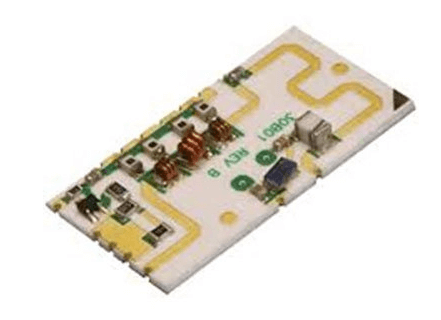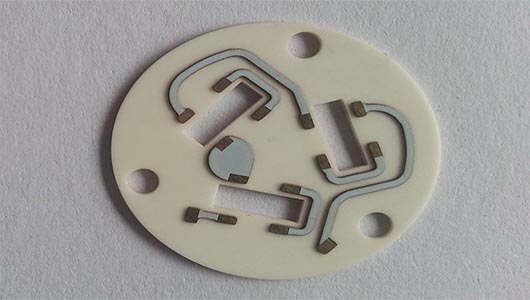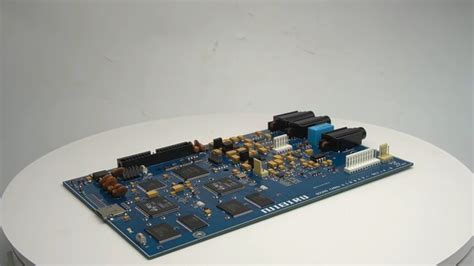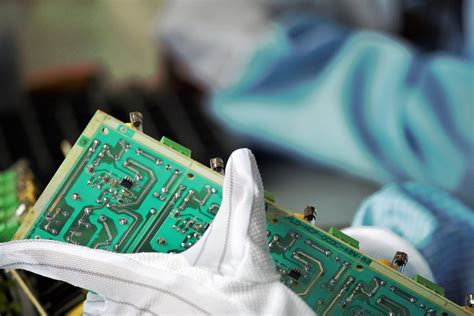The Rise of Ceramic PCB Manufacturers: Revolutionizing the Electronics Industry
In the ever-evolving world of electronics, the demand for high-performance, reliable, and durable printed circuit boards (PCBs) has never been greater. As industries such as aerospace, automotive, telecommunications, and medical devices push the boundaries of technology, traditional PCB materials like FR-4 are often insufficient to meet the rigorous requirements of modern applications. This is where ceramic PCBs come into play, offering superior thermal, mechanical, and electrical properties. Ceramic PCB manufacturers are at the forefront of this technological revolution, providing innovative solutions that are reshaping the electronics industry.
What Are Ceramic PCBs?
Ceramic PCBs are a type of circuit board that uses ceramic materials as the substrate instead of the more common FR-4 or other organic materials. The most commonly used ceramic materials in PCB manufacturing include aluminum oxide (Al2O3), aluminum nitride (AlN), and beryllium oxide (BeO). These materials are chosen for their exceptional thermal conductivity, electrical insulation, and mechanical strength.
Unlike traditional PCBs, which are made from laminated layers of fiberglass and epoxy resin, ceramic PCBs are constructed using a combination of ceramic substrates and conductive traces, typically made of copper, silver, or gold. This unique construction allows ceramic PCBs to operate efficiently in high-temperature, high-frequency, and high-power environments, making them ideal for a wide range of advanced applications.

Advantages of Ceramic PCBs
The growing popularity of ceramic PCBs can be attributed to their numerous advantages over traditional PCB materials. Some of the key benefits include:
- Superior Thermal Conductivity: One of the most significant advantages of ceramic PCBs is their excellent thermal conductivity. Materials like aluminum nitride (AlN) and beryllium oxide (BeO) have thermal conductivity values that far exceed those of traditional PCB materials. This allows ceramic PCBs to dissipate heat more effectively, reducing the risk of overheating and improving the overall reliability and lifespan of electronic components.
- High Electrical Insulation: Ceramic materials are inherently excellent electrical insulators. This property is crucial in high-voltage applications where electrical leakage or short circuits could lead to catastrophic failures. Ceramic PCBs provide a stable and reliable insulating layer, ensuring the safe operation of electronic devices.
- Mechanical Strength and Durability: Ceramic PCBs are known for their exceptional mechanical strength and durability. They are resistant to wear, corrosion, and thermal shock, making them suitable for use in harsh environments. This durability is particularly important in industries such as aerospace and automotive, where electronic components are exposed to extreme conditions.
- Compact Design and Miniaturization: The high thermal and electrical performance of ceramic PCBs allows for the design of more compact and lightweight electronic devices. This is especially important in applications where space is limited, such as in medical implants or portable electronics.
- High-Frequency Performance: Ceramic PCBs exhibit low dielectric loss and high signal integrity, making them ideal for high-frequency applications. This is particularly beneficial in telecommunications and RF (radio frequency) applications, where signal clarity and stability are critical.
Applications of Ceramic PCBs
The unique properties of ceramic PCBs make them suitable for a wide range of applications across various industries. Some of the most common applications include:
- Aerospace and Defense: In the aerospace and defense industries, electronic components must withstand extreme temperatures, vibrations, and radiation. Ceramic PCBs are used in avionics, radar systems, and satellite communications due to their ability to operate reliably in harsh environments.
- Automotive: The automotive industry is increasingly relying on ceramic PCBs for applications such as engine control units (ECUs), LED lighting, and electric vehicle (EV) power systems. The high thermal conductivity and durability of ceramic PCBs make them ideal for these demanding applications.
- Medical Devices: Ceramic PCBs are widely used in medical devices, particularly in implantable devices such as pacemakers and defibrillators. Their biocompatibility, reliability, and ability to operate at high temperatures make them a preferred choice for life-saving medical technologies.
- Telecommunications: The telecommunications industry benefits from the high-frequency performance of ceramic PCBs, which are used in RF modules, base stations, and satellite communication systems. The low dielectric loss and high signal integrity of ceramic PCBs ensure clear and stable communication.
- Industrial Electronics: In industrial settings, ceramic PCBs are used in power electronics, motor drives, and sensors. Their ability to handle high power and operate in high-temperature environments makes them suitable for these applications.

The Role of Ceramic PCB Manufacturers
Ceramic PCB manufacturers play a crucial role in the development and production of these advanced circuit boards. They are responsible for designing, fabricating, and testing ceramic PCBs to meet the specific requirements of their customers. The manufacturing process for ceramic PCBs is complex and requires specialized equipment and expertise.
Key Steps in Ceramic PCB Manufacturing
- Material Selection: The first step in the manufacturing process is selecting the appropriate ceramic material based on the application requirements. Aluminum oxide (Al2O3) is the most commonly used material due to its balance of cost and performance. However, for applications requiring higher thermal conductivity, aluminum nitride (AlN) or beryllium oxide (BeO) may be used.
- Substrate Preparation: The ceramic substrate is prepared by cutting it to the desired size and shape. The substrate is then cleaned and polished to ensure a smooth surface for the subsequent layers.
- Conductive Layer Deposition: A conductive layer, typically made of copper, silver, or gold, is deposited onto the ceramic substrate. This is done using techniques such as screen printing, sputtering, or electroplating. The conductive layer forms the circuit traces and pads that connect the electronic components.
- Patterning and Etching: The conductive layer is patterned using photolithography or laser direct imaging (LDI) to create the desired circuit design. The excess conductive material is then etched away, leaving behind the circuit traces.
- Sintering: The ceramic substrate with the conductive layer is sintered at high temperatures to bond the materials together and improve their mechanical and electrical properties. Sintering also helps to remove any residual stresses in the material.
- Component Assembly: Electronic components are mounted onto the ceramic PCB using surface mount technology (SMT) or through-hole technology (THT). The components are then soldered in place using reflow soldering or wave soldering techniques.
- Testing and Quality Control: The finished ceramic PCB undergoes rigorous testing to ensure it meets the required specifications. This includes electrical testing, thermal testing, and visual inspection. Any defects or issues are identified and corrected before the PCB is shipped to the customer.
Challenges Faced by Ceramic PCB Manufacturers
While ceramic PCBs offer numerous advantages, their manufacturing process presents several challenges. These include:
- High Material Costs: Ceramic materials, particularly aluminum nitride (AlN) and beryllium oxide (BeO), are more expensive than traditional PCB materials. This can result in higher production costs, which may be passed on to the customer.
- Complex Manufacturing Process: The manufacturing process for ceramic PCBs is more complex and time-consuming than that of traditional PCBs. This requires specialized equipment and skilled personnel, which can increase production costs and lead times.
- Fragility: While ceramic materials are strong and durable, they can be brittle and prone to cracking if not handled properly. This requires careful handling during the manufacturing process to avoid damage to the substrate.
- Limited Design Flexibility: Ceramic PCBs are less flexible than traditional PCBs, which can limit their use in certain applications. Additionally, the high thermal conductivity of ceramic materials can make it challenging to design circuits with precise thermal management.
The Future of Ceramic PCB Manufacturing
As the demand for high-performance electronics continues to grow, the role of ceramic PCB manufacturers will become increasingly important. Advances in materials science and manufacturing technology are expected to drive further innovation in the field of ceramic PCBs, leading to even more advanced and reliable products.
One area of focus for future development is the integration of ceramic PCBs with other advanced technologies, such as 3D printing and flexible electronics. This could open up new possibilities for the design and manufacture of electronic devices, allowing for greater customization and miniaturization.
Another area of interest is the development of new ceramic materials with even higher thermal conductivity and electrical insulation properties. This could further enhance the performance of ceramic PCBs and expand their range of applications.
In conclusion, ceramic PCB manufacturers are playing a pivotal role in the advancement of the electronics industry. By providing high-performance, reliable, and durable circuit boards, they are enabling the development of cutting-edge technologies that are transforming industries and improving our daily lives. As the demand for ceramic PCBs continues to grow, manufacturers will need to innovate and adapt to meet the evolving needs of their customers, ensuring that they remain at the forefront of this exciting and dynamic field.






